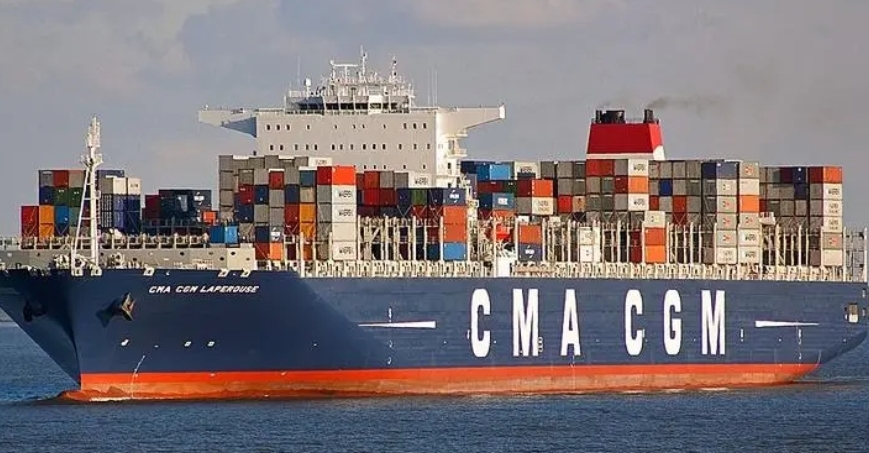
文丨周昕怡 编辑丨石磊
创造一个品牌的方式有很多种,每一种都有它的独特之处和可能性。就像拼图一样,每一种方式都是一片拼图,合在一起才能完整地呈现出一个品牌的形象。
运动服饰品牌Baleaf绕开户外、跑步等热门类目,而是先从滑雪、骑行、高尔夫等小众运动切入红海的服饰赛道。九年时间,Baleaf崛起成为多个运动服饰品类的头部卖家,年销售额超十亿,其瑜伽服产品更是持续霸占亚马逊类目销售第一。
通过实现成本可控与规模化生产,加以打造爆款单品的运营逻辑,家居品牌Molblly成功从传统工厂转型成为跨境电商品牌。在极度内卷的家居行业,Molblly也跻身亚马逊床垫类目美国站第二、加拿大站第一,年销售额超15亿元。
乐器品牌Donner关注到音乐初学者市场的广阔空间,并利用科技创新拓展产品边界,用新材料改造传统乐器,从而在多巨头垄断的格局中寻觅新的生存空间。在这一小众赛道上,Donner实现年营收超10亿元,还冲进亚马逊乐器品类前三。
在跨境电商领域,一个又一个品牌崛起,他们有不少都是从亚马逊站点直接起步。最新统计显示,过去三年,通过亚马逊全球开店出海的中国品牌型卖家数量增长了近两倍,其销售额在2022年也实现了双位数增长。
对于想要从0到1创造一个品牌的创业者来说,选择合适的电商平台并打造独特的品牌形象是至关重要的。
一个事实是,在全球电商巨头平台亚马逊上,新品牌如雨后春笋般涌现。随着亚马逊品牌基建工具和资源的完善,无论是亚马逊原生品牌,还是新入场的出海品牌,这些中国卖家无需再通过打通线下各渠道、在各平台营销来实现品牌认知,而是可以利用亚马逊全球站点“一键”打通各市场,并结合亚马逊资源和优势,快速洞察市场,制定高效营销策略,来实现弯道超车。

01
品牌出海,高品质产品推动增长
在跨境电商迈入品牌出海黄金时代之际,三类中国跨境品牌商家逐渐走上舞台中央。
随着跨境电商行业流量红利逐渐退却,竞争由增量转向存量,白牌卖家借助谷歌流量红利铺货起家的故事已无法复刻。“流量”成为悬在跨境电商企业头上的达摩克斯之剑,广告推广成本和点击成本都居高不下,拉新成本也持续上升,跨境电商企业极容易陷入高广告投入低利润收益的困境。
在铺货型路线变得不合时宜之下,跨境电商卖家或被动或主动地选择品牌化转型,他们尝试从流量逻辑变为用户逻辑。从用户出发,卖家通过洞察用户需求来创造独特产品和品牌精神,进而再围绕每一个用户触点来提升品牌体验,最后聚焦用户留存,将品牌价值递增。在与消费者产生粘性后,卖家可以通过提升消费者复购不断降低流量成本,让流量不再是流量,而是沉淀为反复运营的资产,将品牌路线越走越顺。
千岸科技在跨境出海13年经历中,曾大刀阔斧地将原有十个品牌线砍到3个,并坚持对产品进行“微创新”,通过优化产品细节来不断解决用户痛点,实现从铺货到品牌的转型。在理解用户和占领用户心智之后,千岸科技旗下三大核心品牌——画笔类的ohuhu,音频类的Tribit,以及运动户外类的Sportneer,年销售额均在亿级。
千岸科技CEO何定曾对亿邦动力表示,亚马逊品牌是前期的一个发展阶段,而每一个细分品类都有希望走出一个Anker来。
同样加速品牌化的还有传统外贸工厂。在传统外贸形势严峻,跨境电商愈发成为新增长引擎下,传统工厂也不再满足于生产低端廉价产品和低成本代工模式,而是升级商业模式,筹划做起完全自主的中国品牌,用高品质的产品、先进的设计来打动消费者。
以往,他们依附于上游国外贸易商或品牌商,进行代加工业务,并没有议价权,且订单碎片化,业务也难以扩张。而跨境电商平台则给了外贸工厂直接对话消费者的权力,工厂能掌握消费的话语权,进而拥有议价权。但是由于欠缺品牌打法,外贸工厂会将买量、低价等竞争策略照搬到海外市场,难以真正形成产品力和品牌力。不过跨境电商平台很好地补足这一短板。
随着更多工厂通过平台实现To B转向To C的“涅槃重生”,实现从0到1打造品牌,传统外贸工厂转型做跨境电商品牌的浪潮也越来越大。而相比之下,已有品牌建设经历的国内品牌出海,不需要改变经营模式,则是更多面临如何将品牌和产品本土化问题。
在不同区域客群属性、渠道特点、消费者行为习惯等方面,海外市场与国内都存在着巨大的差异,由于缺少对当地市场了解,国内品牌对于产品设计、海外使用场景洞察和海外消费者沟通方面都比较缺乏。更重要的是,进入海外市场后,国内品牌原有的光环不再,需要重新积累用户和渠道资源。
像美的、公牛、坦博尔、卡姿兰、小牛电动、Babycare等成熟品牌选择入驻亚马逊,借助其庞大的用户资源和自身完善的品牌打造方法和渠道,更加高效、精准地触达海外消费者。同时,在亚马逊上积累的品牌声量和产品的信任背书,还能直接撬动线下渠道的合作。
这些跨境品牌商家的成功转型和成长,为跨境电商行业的未来发展注入了新的动力。
02
以用户为中心,找到差异化增长路径长
长久以来,中国企业往往都更擅长在性价比和生产环节中建立和创造优势,但在已经到来的品牌时代,他们转身建立起竞争优势和壁垒,构建品牌力,修筑坚不可摧的“护城河”,摆脱价格内卷和产品同质化泥潭。
当然,“做品牌”并非一个口号,而意味着一套品牌建设的方法论。在亚马逊上,当确定品牌定位、名称等品牌信息,完成商标注册和亚马逊品牌注册,就完成了打造品牌从0到1的第一步,可以全面开启品牌保护并获得多达三十种品牌工具的使用权益,从而做好品牌基建,用好品牌工具。
品牌是起点,不是终点。对于跨境卖家而言,更重要的是运用品牌策略形成更大的单量、更好的美誉度以及影响力。随着品牌出海黄金时代的到来,亚马逊也着力推动卖家从当下业绩的视角向深耕长远的品牌思维进阶,从重商品、重流量向用户运营、品牌资产积累发展。那么在卖家究竟该如何走好品牌增长之路?
作为全球化的知名消费电子品牌企业,安克创新是一众跨境电商企业中的标杆企业,提供了打造品牌的优秀范本。在“速生速死”的消费电子行业,安克采用的品牌策略架构是从最早的单一充电品类产品研发,发展为多品牌、多品类的系列产品矩阵。

亿邦动力获悉,其拓展新品类的逻辑为“浅海战略”,围绕用户,寻找有一定市场需求,处于市场周期的萌芽期或成长期,以及有创新空间的新领域,并做好技术积累,抓住用户需求,做组织的创新建设,持续地去创造新产品,用品牌力占据消费者心智。
“品牌策略要定位到用户人群,从人群倒推场景、倒推痛点、再做Marketing。”在日前举行的“2023亚马逊全球开店品牌出海高峰论坛”上,运动服饰品牌BALEAF首席品牌官Katherine还表示,通过和亚马逊和美国品牌咨询公司的联动和大面积的用户洞察分析,BALEAF发现自身客群为年收入在17万美金的中层及以上群体,从而基于该人群做各种策略调整。
高性能越野车配件品牌KEMIMOTO则提供了细分品类突围的样本。KEMIMOTO以传统外贸模式起家,后切入UTV极限越野车这一高度专业化赛道,借助亚马逊各国家站点触达到全球市场。基于用户需求创新产品,再配合供应链优化,KEMIMOTO逐渐成长为这一小众赛道的领跑者,创造了年销售10亿业绩。
今年跻身跨境电商上市公司行列的致欧科技,经历过品牌重塑,早已实现从卖家到家居品牌的转型升级。在卖货阶段,借助亚马逊提供的评分机制,致欧科技致力于给消费者提供好产品,了解真实客户的声音,在工厂端解决产品品质上的问题。到了品牌阶段,致欧科技不光解决消费者反馈的问题,还深挖藏在产品和消费者使用习惯背后的诉求,同时注重品牌宣传,在亚马逊平台上将产品理念、品牌Slogan、视觉效果完善,展现其品牌发展追求。
这些案例为其他跨境电商企业提供了宝贵的参考,也展示了品牌建设在跨境出海中的核心地位。
03
从爆款到精准触达的转变
过去电商平台就是一个销售渠道,但现在品牌更注重通过平台培养与消费者的长期关系。在品牌眼里,亚马逊是打造全球品牌的必经之路,是品牌官方旗舰店,还是品牌流量承接的最佳阵地。
年销三十万件的羽绒服品牌Orolay在2013年就通过亚马逊出海,借助其庞大客群快速进入海外市场。在亚马逊上,Orolay通过平台收集大量用户的实时反馈,从而挖掘更多的洞察和产品优化方向,进一步加速产品创新和迭代。其一件“092款”羽绒服单品更是在美国市场火爆,创下2天破万件销售记录,有着“Amazon coat”之称。
如今,Orolay并不满足于一件爆款,而是规划塑造更清晰品牌形象。借助亚马逊的各类营销工具和全域广告产品,Orolay探索贴近消费者的营销方式,实现了强劲增长。在亚马逊商城内,Orolay通过品牌旗舰店、帖子、品牌推广、亚马逊直播等讲述品牌故事;在亚马逊商城外,Orolay借助亚马逊提供的流媒体电视广告、亚马逊实体店Amazon Style等提升品牌认知,并充分利用社交红人资源制作创意素材,展现原创设计和时尚灵感。
事实上,亚马逊拥有包括购物、视频流媒体、音乐等多种服务,能帮助品牌立体化地触达海外的消费者。品牌可以在亚马逊商城做视频推广,在Prime Video、Twitch、Freevee上和热门视频内容共同展示,或是利用亚马逊直播实时连接消费者。在视频营销时代,亚马逊还提供以流媒体电视广告、在线视频广告为代表的广告产品,共同为品牌搭建起了一站式视频营销的可能性。
伴随消费者习惯的改变、更多卖家走向品牌建设之路,亚马逊也与时俱进地升级品牌打造的方法论和工具。从关注关键词、排名指标的打造爆款逻辑,升级到人群细分的品牌逻辑,从“人找货”变成“货找人”。
在打造爆款逻辑下,品牌可以通过亚马逊各种数据分析工具,来了解消费者习惯。借助亚马逊工具“商机探测器”(Opportunity Explorer),品牌可以看出目标细分市场的需求量、增量和竞争度,看到目标市场平均价格和价格带分布,找到用户群体和深挖使用场景。同时,通过“亚马逊品牌分析”(Amazon Brand Analytics),品牌可以看到和自己品牌、品类相关的搜索词的实时变化和转化情况,了解不同类目的消费者画像,包括年龄、收入、性别、消费习惯。

而在人群细分的品牌逻辑下,亚马逊在今年正式上线品牌定制促销工具,帮助品牌实现“货找人”,为顶级客户、复购客户、潜力新客、高消费客户、近期购买过的客户、品牌粉丝、高潜力客户、有留失风险的客户和未付款客户这9类消费者“量身定制”促销,精准触达想定向投放的高购买意向顾客。
具体而言,品牌可以通过该工具在亚马逊商城搜索结果页、商品详情页和促销购物页面上,创建“粉丝折扣”(Follower Promotion)和“独家促销”(Exclusive Promotion)两种促销标记,设置10%-50%之间的折扣力度,而后符合条件的消费者将能够在搜索结果、商品详情页和促销购物页面上查看到定制促销的信息。
一位使用品牌定制促销工具的亚马逊卖家指出,在用户为王的时代,精准营销即是精准触达用户,精准满足用户的需求。通过品牌定制促销工具,运营团队可以根据不同的顾客人群,定制化设计不同的促销方案,从而提高促销的转化效率。
《科特勒营销策略》也提到:“营销不是销售产品,而是满足需求。” 这些在亚马逊平台上成功的品牌,正是通过深入了解消费者需求,并提供满足这些需求的产品和服务,才得以赢得消费者的信任和忠诚度。
对于想要在跨境出海下半场有所作为的企业来说,亚马逊不仅是一个获客和订单成交的所在,更是一个品牌登台和成长的舞台。在这个舞台上,只有找到并执行正确的品牌战略,才能实现品牌的快速增长和影响力提升。
The platform is also the stage for the brand.
Article | Edited by Zhou Xinyi | Shi Lei
There are many ways to create a brand, each with its unique features and possibilities. Just like a puzzle, each method is a piece of puzzle, and together, it can fully present the image of a brand.
Baleaf, a sportswear brand, bypasses popular categories such as outdoor and running, but first cuts into the clothing track of the Red Sea from niche sports such as skiing, cycling, and golf. Over the course of nine years, Baleaf has emerged as a top seller in multiple sports apparel categories, with annual sales exceeding one billion yuan. Its yoga clothing products have continued to dominate Amazon's category sales.
By achieving cost control and large-scale production, combined with the operational logic of creating popular items, the home brand Molbyly has successfully transformed from a traditional factory to a cross-border e-commerce brand. In the extremely introverted home furnishings industry, Molbyly also ranks second in the Amazon mattress category in the United States and first in Canada, with annual sales exceeding 1.5 billion yuan.
Instrument brand Donner pays attention to the vast space in the music beginner market and uses technological innovation to expand product boundaries, transforming traditional instruments with new materials, in order to find new living space in the multi giant monopoly pattern. On this niche track, Donner achieved an annual revenue of over 1 billion yuan and even made it into the top three of Amazon's instrument category.
In the field of cross-border e-commerce, one brand after another has emerged, and many of them have started directly from Amazon sites. The latest statistics show that in the past three years, the number of Chinese branded sellers who have opened global stores on Amazon has nearly tripled, and their sales have also achieved double-digit growth in 2022.
For entrepreneurs who want to create a brand from 0 to 1, choosing the right e-commerce platform and creating a unique brand image is crucial.
One fact is that new brands are springing up like mushrooms on the global e-commerce giant platform Amazon. With the improvement of Amazon's brand infrastructure tools and resources, whether it's Amazon's native brands or newly entered overseas brands, these Chinese sellers no longer need to achieve brand awareness by connecting offline channels and marketing on various platforms. Instead, they can use Amazon's global site to "one click" connect various markets, and combine Amazon's resources and advantages to quickly penetrate the market, develop efficient marketing strategies, and achieve corner overtaking.
Brands Going Abroad, High Quality Products Driving Growth
As cross-border e-commerce enters the golden era of brand exposure, three types of Chinese cross-border brand merchants are gradually stepping onto the center of the stage.
As the traffic dividend in the cross-border e-commerce industry gradually recedes and competition shifts from incremental to stock, the story of white label sellers starting their businesses with Google's traffic dividend cannot be replicated. "Traffic" has become the sword of Damox hanging over cross-border e-commerce enterprises, with high advertising promotion and click through costs, and the cost of attracting new customers continues to rise. Cross border e-commerce enterprises are easily trapped in the dilemma of high advertising investment and low profit returns.
As the distribution route becomes outdated, cross-border e-commerce sellers either passively or actively choose branding transformation, attempting to shift from traffic logic to user logic. Starting from the user perspective, sellers create unique products and brand spirit by insight into user needs, and then enhance the brand experience around each user touch point. Finally, they focus on user retention and increase brand value. After creating stickiness with consumers, sellers can continuously reduce the cost of traffic by increasing consumer repurchase, so that traffic is no longer just traffic, but rather precipitated into assets of repeated operations, and the brand route becomes smoother and smoother.
In its 13 years of cross-border experience, Qian'an Technology has aggressively cut its existing ten brand lines to three, and has persisted in "micro innovation" of its products. By optimizing product details, Qian'an Technology continuously solves user pain points and achieves a transformation from distribution to branding. After understanding users and occupying their minds, Qian'an Technology's three core brands - ohuhu for brushes, Tribit for audio, and Sportneer for outdoor sports, all have annual sales of over 100 million yuan.
Qian'an Technology CEO He Ding once told Yibang Power that the Amazon brand is an early stage of development, and every sub category has the hope of creating an Anker.
Traditional foreign trade factories are also accelerating branding. In the severe situation of traditional foreign trade, cross-border e-commerce has become a new growth engine. Traditional factories are no longer satisfied with producing low-end and low-cost products and OEM models, but are upgrading their business models and planning to establish fully independent Chinese brands, using high-quality products and advanced designs to impress consumers.
In the past, they relied on upstream foreign traders or brand merchants for OEM business without bargaining power, and their orders were fragmented, making it difficult to expand their business. Cross border e-commerce platforms, on the other hand, give foreign trade factories the power to directly communicate with consumers, allowing them to have a say in consumption and thus have bargaining power. However, due to the lack of brand strategy, foreign trade factories will copy competitive strategies such as buying volume and low prices into overseas markets, making it difficult to truly form product and brand strength. However, cross-border e-commerce platforms have effectively filled this gap.
As more factories transform from "To B" to "To C" through platforms and achieve brand building from 0 to 1, the wave of traditional foreign trade factories transforming into cross-border e-commerce brands is also increasing. In contrast, domestic brands that have already experienced brand building do not need to change their business models when going abroad, but rather face more issues of how to localize their brands and products.
In terms of customer group attributes, channel characteristics, and consumer behavior habits in different regions, there are significant differences between overseas markets and domestic markets. Due to a lack of understanding of the local market, domestic brands lack insight into product design, overseas usage scenarios, and communication with overseas consumers. More importantly, after entering the overseas market, the original halo of domestic brands no longer exists, and it is necessary to accumulate user and channel resources again.
Mature brands such as Midea, Bulls, Tambor, Kaziran, Mavericks Electric, and Babycare have chosen to enter Amazon, leveraging their vast user resources and well-established brand building methods and channels to more efficiently and accurately reach overseas consumers. At the same time, the brand reputation and product trust endorsement accumulated on Amazon can also directly leverage offline channel cooperation.
The successful transformation and growth of these cross-border brand merchants have injected new impetus into the future development of the cross-border e-commerce industry.
Focusing on users and finding a long path to differentiated growth
For a long time, Chinese enterprises have often been better at establishing and creating advantages in cost-effectiveness and production processes. However, in the brand era that has arrived, they have turned to establish competitive advantages and barriers, build brand strength, build an indestructible "moat", and break free from the quagmire of price competition and product homogenization.
Of course, 'branding' is not a slogan, but rather a methodology for brand building. On Amazon, when brand positioning, name, and other brand information are determined, trademark registration and Amazon brand registration are completed, the first step in building a brand from 0 to 1 is completed. It can fully activate brand protection and obtain up to 30 brand tool usage rights, thereby doing a good job in brand infrastructure and utilizing brand tools.
Brand is the starting point, not the end point. For cross-border sellers, it is more important to use brand strategies to generate greater order volume, better reputation, and influence. With the arrival of the golden era of brand going global, Amazon is also focusing on promoting sellers to advance from the perspective of current performance to a deep and long-term brand thinking, and develop from a focus on products and traffic to user operation and brand asset accumulation. So how should sellers take the path of brand growth?
As a globally renowned consumer electronics brand enterprise, Anke Innovation is a benchmark among numerous cross-border e-commerce enterprises, providing an excellent model for brand building. In the consumer electronics industry of "fast growth and fast death", Anke's brand strategy architecture has evolved from the earliest single charging category product research and development to a multi brand, multi category series product matrix.
Yibang Power learned that its logic for expanding new categories is the "shallow sea strategy", which focuses on users, seeks new fields with certain market demand, which are in the embryonic or growth stage of the market cycle, and has innovation space. It also accumulates technology, seizes user needs, conducts organizational innovation construction, continuously creates new products, and uses brand power to occupy the minds of consumers.
Brand strategy should be positioned towards the user base, starting from the crowd's backtracking scenarios, backtracking pain points, and then conducting marketing. "At the recently held" 2023 Amazon Global Store Branding Summit Forum, "Katherine, Chief Brand Officer of sportswear brand BALEAF, also stated that through collaboration with Amazon and American brand consulting companies and extensive user insight analysis, BALEAF has found that its customer base is a mid level and above group with an annual income of $170000, and has made various strategic adjustments based on this group.
KEMIMOTO, a high-performance off-road vehicle accessory brand, has provided samples of breaking through sub categories. KEMIMOTO started with a traditional foreign trade model and later entered the highly specialized track of UTV extreme off-road vehicles, leveraging Amazon's various national sites to reach the global market. Based on user demand and innovative products, combined with supply chain optimization, KEMIMOTO has gradually grown into a leader in this niche market, creating an annual sales revenue of 1 billion yuan.
Zhiou Technology, which has entered the list of cross-border e-commerce listed companies this year, has undergone brand reshaping and has already achieved transformation and upgrading from a seller to a home brand. During the sales phase, with the help of Amazon's rating mechanism, Zhiou Technology is committed to providing consumers with good products, understanding the voices of real customers, and solving product quality issues at the factory level. At the brand stage, Zhiou Technology not only solves the problem of consumer feedback, but also delves into the demands hidden behind the product and consumer usage habits. At the same time, it pays attention to brand promotion and improves the product concept, brand Slogan, and visual effects on the Amazon platform, demonstrating its brand development pursuit.
These cases provide valuable references for other cross-border e-commerce enterprises and also demonstrate the core position of brand building in cross-border outbound activities.
The transformation from popular models to precise touch
In the past, e-commerce platforms were just sales channels, but now brands are more focused on cultivating long-term relationships with consumers through platforms. In the eyes of brands, Amazon is the only way to build a global brand, the official flagship store of the brand, and the best platform for brand traffic.
Orolay, a down jacket brand with an annual sales of 300000 pieces, quickly entered overseas markets through Amazon in 2013, leveraging its large customer base. On Amazon, Orolay collects real-time feedback from a large number of users through the platform to explore more insights and product optimization directions, further accelerating product innovation and iteration. One of the "092" down jacket items is even more popular in the US market, setting a sales record of over 10000 pieces in two days, earning the nickname "Amazon coat".
Nowadays, Orolay is not satisfied with a popular product, but plans to shape a clearer brand image. With the help of various marketing tools and global advertising products from Amazon, Orolay has explored marketing methods that are close to consumers and achieved strong growth. In Amazon Mall, Orolay tells brand stories through flagship stores, posts, brand promotion, Amazon live streaming, and more; Outside the Amazon Mall, Orolay leverages Amazon's streaming TV ads, Amazon Style, and other physical stores to enhance brand awareness, and fully utilizes social influencer resources to create creative materials that showcase original design and fashion inspiration.
In fact, Amazon has various services including shopping, video streaming, music, etc., which can help brands reach overseas consumers in a three-dimensional manner. Brands can do video promotion on Amazon Mall, showcase popular video content together on Prime Video, Twitch, and Freeve, or use Amazon Live to connect consumers in real-time. In the era of video marketing, Amazon also provides advertising products represented by streaming TV advertising and online video advertising, jointly building the possibility of one-stop video marketing for brands.
With the change in consumer habits and more sellers moving towards brand building, Amazon is also upgrading its brand building methodology and tools with the times. From focusing on keywords and ranking indicators to building a popular brand logic, upgrading to a brand logic of segmented audience, from "people looking for goods" to "goods looking for people".
Under the logic of creating popular products, brands can use various data analysis tools on Amazon to understand consumer habits. With the help of Amazon's "Opportunity Explorer" tool, brands can see the demand, growth, and competitiveness of their target market segments, see the average price and price band distribution of the target market, identify user groups, and delve deeper into usage scenarios. Meanwhile, through Amazon Brand Analytics, brands can see real-time changes and conversions of search terms related to their own brand and category, and understand consumer profiles of different categories, including age, income, gender, and consumption habits.
Under the brand logic of crowd segmentation, Amazon has officially launched a brand customized promotional tool this year to help the brand achieve "finding people" by "tailoring" promotions for top customers, repeat purchase customers, potential new customers, high consumption customers, recent purchases, brand fans, high potential customers, customers with retention risk, and unpaid customers, accurately reaching high purchasing intention customers who want to target and advertise.
Specifically, brands can use this tool to create two promotional tags, "Follow Promotion" and "Exclusive Promotion", on the search results page, product details page, and promotional shopping page of Amazon Mall. They can set a discount intensity between 10% and 50%, and then eligible consumers will be able to view the search results Customized promotional information can be viewed on the product details page and promotional shopping page.
An Amazon seller who uses brand customized promotional tools pointed out that in the era of users being king, precision marketing is precisely reaching users and meeting their needs. By using brand customized promotional tools, the operation team can customize and design different promotional plans based on different customer groups, thereby improving the conversion efficiency of promotions.
The Kotler Marketing Strategy also states that "marketing is not about selling products, but meeting needs." It is through in-depth understanding of consumer needs and providing products and services that these successful brands on the Amazon platform can win the trust and loyalty of consumers.
For companies looking to make a difference in the second half of cross-border sales, Amazon is not only a place to win customers and close orders, but also a stage for brand emergence and growth. On this stage, only by finding and implementing the correct brand strategy can we achieve rapid brand growth and increased influence.
责任编辑:













